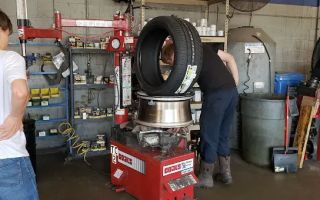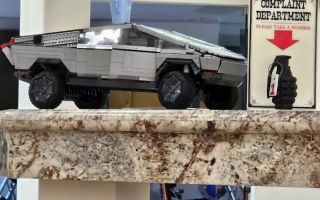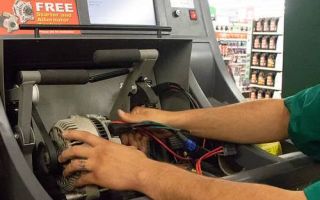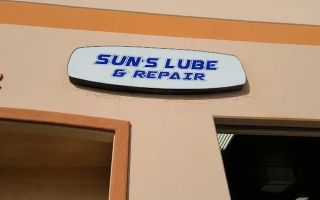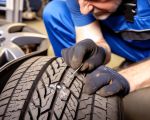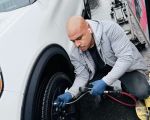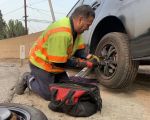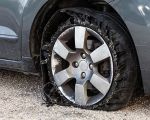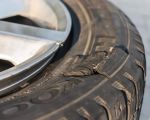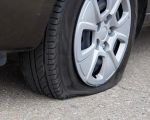How to Detect a Slow Leak in a Flat Tire and What to Do About It
As a car owner, one of the most frustrating situations you might face is discovering that you have a flat tire. But sometimes, the issue isn’t as obvious as it seems. A slow leak can leave you stranded or cause further damage to your vehicle if left unchecked. In this article, we will walk you through how to detect a slow leak in a flat tire and what steps you should take to prevent a more serious problem.

MR. TIRE INC.
2078 New York Ave, Huntington Station, NY 11746, USA
What is a Slow Leak and How Does it Happen?
A slow leak in a tire happens when air gradually escapes from the tire, leading to a loss of pressure over time. Unlike a sudden puncture or blowout, which is immediately noticeable, a slow leak may go unnoticed until it starts affecting your car's performance. This is especially common in areas where tires have small punctures or cracks that let air escape gradually.
In some cases, slow leaks can be caused by faulty valves, rim damage, or even natural wear and tear from road conditions. If left untreated, a slow leak can lead to an under-inflated tire, which can reduce gas mileage, affect handling, and even cause the tire to blow out under stress.

MR. TIRE INC.
2078 New York Ave, Huntington Station, NY 11746, USA
How to Detect a Slow Leak in Your Tire
1. Check Your Tire Pressure Regularly
The first step in detecting a slow leak is to check your tire pressure regularly. You can do this by using a tire pressure gauge, which is easily available at auto parts stores. The recommended pressure for your tires is usually listed on a sticker inside the driver’s side door frame or in the owner’s manual. Regular checks will help you spot any unusual drops in pressure.
2. Inspect for Visible Damage
Visually inspect your tires for any punctures, cuts, or cracks in the rubber. These are common sources of slow leaks. If you notice something unusual, it might be time to get your tire repaired or replaced. Keep in mind that small holes or cuts may not be visible immediately, so a professional inspection is always a good idea if you suspect a slow leak.
3. Use Soapy Water to Identify Leaks
If you suspect a slow leak but can’t find it visually, using soapy water can help. Simply mix water with dish soap and spray it on the surface of your tire, especially around the valve stem and tread. If there’s a leak, you’ll notice bubbles forming where the air is escaping.
4. Listen for Hissing Sounds
Sometimes, you may hear a faint hissing sound coming from your tire, which indicates air escaping. This is a good indication that you have a slow leak. If you can’t hear it during normal driving, try inspecting your tire while the car is parked in a quiet area.
What to Do if You Find a Slow Leak
1. Repairing a Slow Leak
If you’ve discovered a slow leak, it’s important to act quickly. In many cases, you can have a puncture patched or plugged, which is often enough to get the tire back to normal. For larger leaks or damaged sidewalls, however, the tire may need to be replaced.
Many tire repair shops offer affordable fixes for small punctures. However, you may need to visit a professional service center if you are unsure about the condition of the tire.
2. Temporary Fix with Tire Sealant
If you’re on the road and need a temporary solution, tire sealant can help to seal small holes. It’s a quick fix that can get you to the nearest repair shop, but it should not be considered a permanent solution. Always have your tire professionally inspected and repaired after using sealant.
3. Call Roadside Assistance for Help
If you’re unable to fix the leak yourself or need help changing a flat tire, calling a roadside assistance service is your best option. Many car insurance providers or third-party services offer 24/7 emergency support for situations like flat tires and slow leaks. These services can help you get back on the road safely without further delay.
Real-Life Case Study: A Customer’s Emergency Tire Repair Experience
Let’s look at a real-life case where a customer faced a slow leak issue while on a road trip. John, a driver from Texas, was on his way to visit family when he noticed that his car’s handling felt off. After checking his tire pressure, he realized that one of his tires was significantly underinflated. He pulled over to the side of the road to investigate further.
John used the soapy water method and found tiny bubbles around the valve stem of the tire. He didn’t have a repair kit with him, so he called for roadside assistance. Within 30 minutes, a technician arrived, patched up the tire, and even topped off his other tires. John was able to continue his trip without further issues, all thanks to the quick action of the roadside service provider.
How Roadside Assistance Can Help with Slow Leaks
Roadside assistance services are equipped to handle a variety of situations, including slow tire leaks. Depending on the service package you have, they can help by:
- Offering tire repairs or replacements at your location
- Providing air compressors to inflate tires temporarily
- Transporting your car to a nearby service station
- Offering tire sealant for a temporary fix
Conclusion: Be Proactive and Stay Safe on the Road
Detecting a slow leak early can save you time, money, and frustration. Regular tire inspections, proper maintenance, and knowing how to handle a slow leak can ensure that you stay safe on the road. If you find yourself stuck with a flat tire or suspect a slow leak, don’t hesitate to call a professional service or roadside assistance provider to resolve the issue promptly.
Interested in learning more about our roadside assistance services? Contact us today and ask about our affordable service packages that will keep you covered in case of tire problems, flat tires, and much more. We’re here to help whenever you need it!

